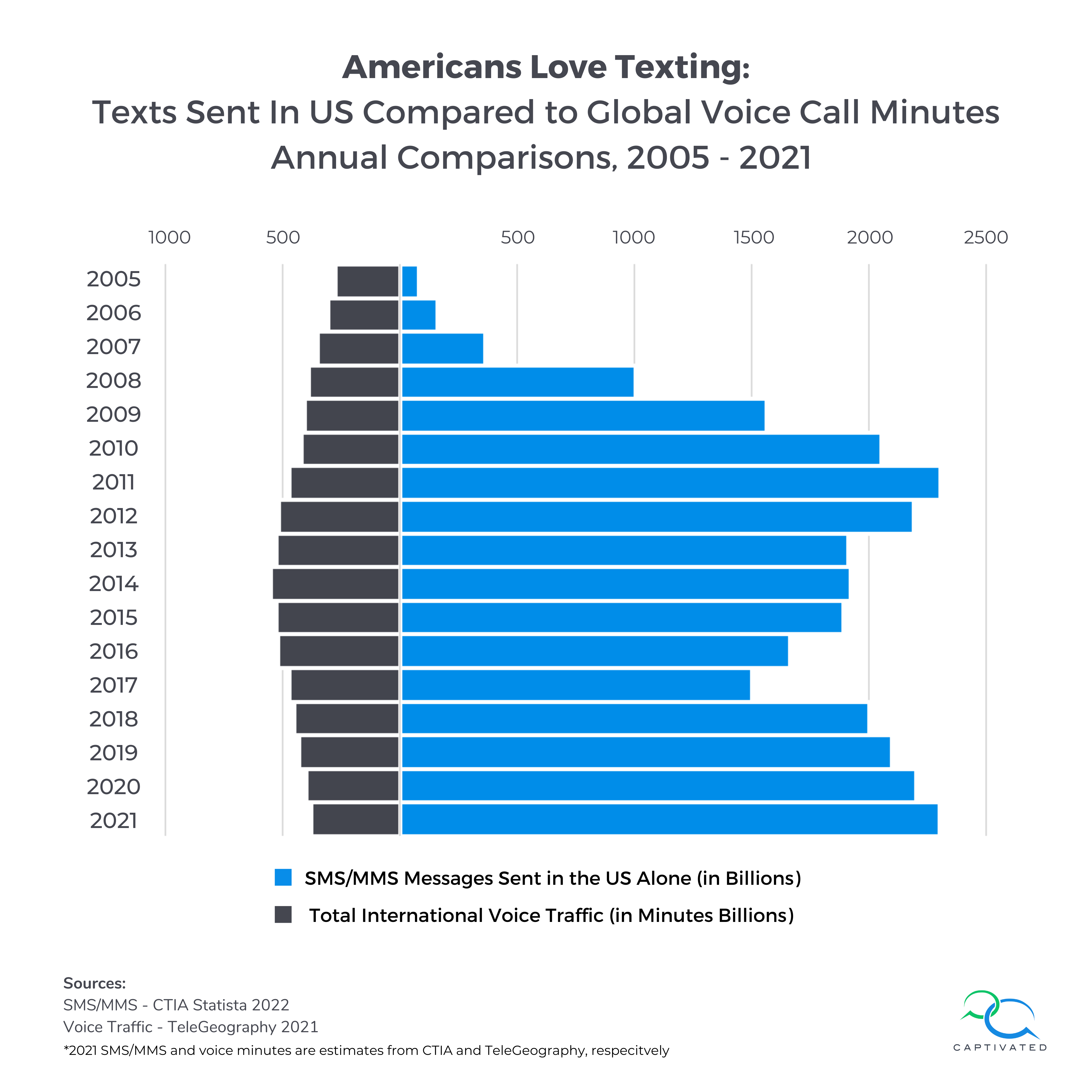The year was 1992: the world woke up and played hits like “Baby Got Back” or “Achy Breaky Heart” while getting ready for work. You fastened your fanny pack, checked your agenda – PDAs hadn’t been released yet –, and poured yourself some coffee (likely not Starbucks, as it wouldn’t go public until June of this year, with only 140 stores). You were deciding whether to go see the premiere of Wayne’s World or Mighty Ducks in theaters that weekend. The world was simpler, but it was advancing quickly: and little did you know everything would change, because that year, the first-ever text would be sent.
From that year forward, texting continued rising in popularity. It began with T9 texting and was limited to 63 characters, until eventually phones evolved to include keyboards, and carriers ditched those length restrictions. After 2002, people could finally attach pictures or videos in their texts (called MMS or ‘multi-media’ messaging). Factors like Wi-Fi availability and iMessage changed the industry, but only continued fueling the fire. In fact the only thing that seemed to slow the climbing prevalence of texting was the eventual introduction and fluctuating usage of apps like WhatsApp (created in 2011), Snapchat (2011), or FB Messenger (2014), until their subsequent declines in usage by 2018. In the years following – and most notably since COVID, as the world has gone more remote in general – texting has taken a steep increase in popularity once again.
Voice calling, by contrast, has declined worldwide. Over time it has been all but wholly replaced by easier and more purposed tools such as Webex or Zoom, FaceTime, email, and – you guessed it – texting. In fact, today in the US, ALL generations actually prefer texting to calling or other forms of communication. This is a marked change from prior decades, wherein different generations have had distinct communication preferences:
- Baby Boomers are now seven times more likely to text than they are to talk in-person and are twice as likely to send a text instead of call.
- An overwhelming majority (82%) of Millennials prefer texting over a voice call even for business interactions like invoice paying, and 20% report that they prefer texts because they do not regularly check voicemails at all.
- 70% of Gen Z Americans prefer texting even over face-to-face communications, especially for business and remote work purposes.
The numbers are clear: the widespread growth in texting is met with stagnancy or decline in voice calls throughout the years – and that’s a trend that won’t be stopping any time soon.

Some industry laggards or voice-call aficionados might ask themselves, ‘with text inboxes being busier than ever, won’t my call or voicemail stand out that much more now?’ And the answer, simply, is no: 87% of consumers say they ignore phone calls from unknown numbers ‘often’ or ‘very often.’ Text messages, on the other hand, have a nearly 100% open rate. Further, the majority of phone users will open a text within just 3 minutes of receiving a notification, and 58% will actually respond to that text within 5 minutes as well.
And while messaging apps will come and go, SMS/MMS text has remained the most consistently-used method of instant communication: 59% of all phone users say they would prefer texting on their native SMS phone versus any other app. With regards to businesses specifically, another study reported that 90% of leads preferred to be texted rather than called.
Yet while carrier pay plans and packages have adjusted over time to meet the ever-changing needs for phone usage (remember when rollover minutes used to be a thing?), business plans just haven’t seemed to follow suit: only 14% of businesses utilize SMS/MMS texting to communicate messages or offers to customers, whereas 76% of businesses report utilizing email and almost 100% of US businesses use voice calls to reach customers (more on utilization below).
Conversion rates tell a story of their own: multiple SMS marketing research studies have found that the average conversion rate for SMS marketing is between 30-45%. If you work in or around Marketing, this should shock you: by contrast, email averages a 3.26% conversion rate, Google Ads average 3.17% conversion rates, and even well-targeted Facebook/Meta ads still only achieve an average of 9.21%.

Those return rates, coupled with the rising trends and preferences toward texting over other forms of communication, make texting a no-brainer for growing your business.
Of course, there are logistical setbacks that keep businesses from implementing texting, such as using having to use personal phone number(s) – especially if there is no toll free business line or the landline is not text-enabled – as well as issues with monitoring your teams’ conversations or coverage, for sales or support teams. That’s where business texting software providers can become an asset to your operations.
Captivated Business Texting, for example, offers calendar-integrated booking/scheduling, secure payment collection, targeted campaigns for segmented lists of customers, live chat on your website, team queues (i.e. sales, support, BDC, etc.) for handling incoming leads, and can even allow you to set up automated workflows for things like following up with customers or scheduling services after a certain number of months (see an example communication timeline here).
All of the messages send from a secure phone number – not your personal number, if you don’t want to use it – and, most importantly for customers, all of the messages sent from Captivated’s app, desktop platform, or Chrome extension will deliver as texts to customers’ phones.
In today’s world, and for the foreseeable future, it is essential that businesses keep up with the growing need to communicate in a faster and more efficient way (without the use of bots, dial tones, or hold times). Regardless of size or industry, Captivated can help change the landscape of communication for your company.
Sources: Statista, Ofcom, TeleGeography, OpenMarket, Asurion, TeleGeography Report, Local Project, SMS Comparison, EarthWeb, 99 Firms, Telegeography Blog, Oberlo, Home Business Mag, ABC News, Hubspot, Website Rating, Pop Culture Madness 1992 Fun Facts, Web Tribunal, Martech, Forbes
See our original post on LinkedIn here.



